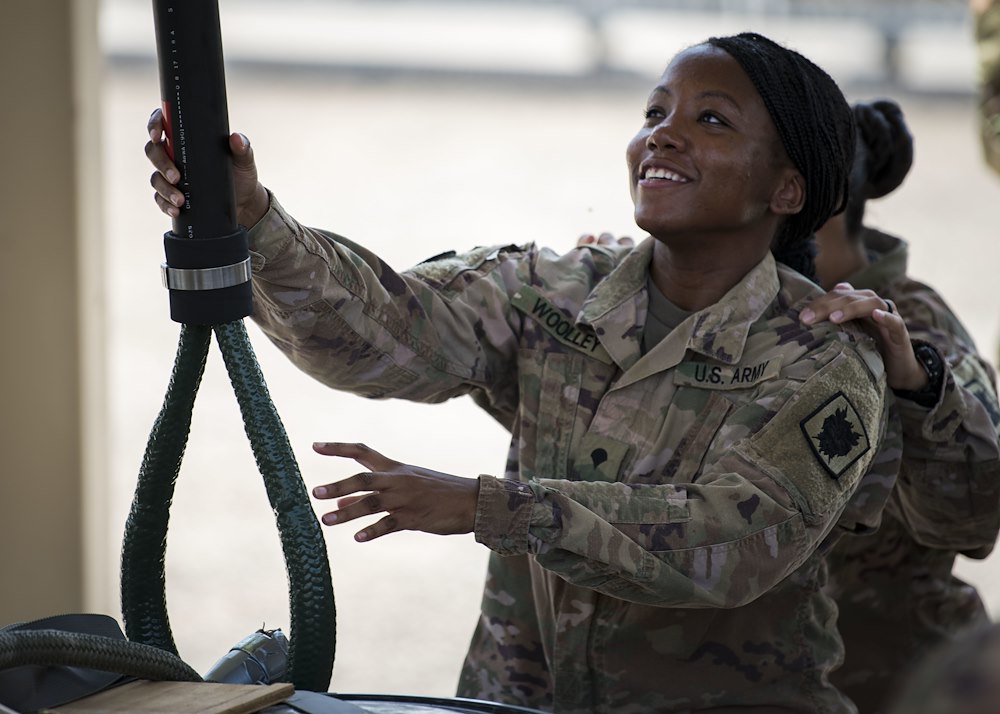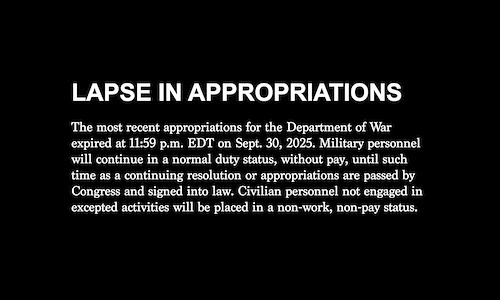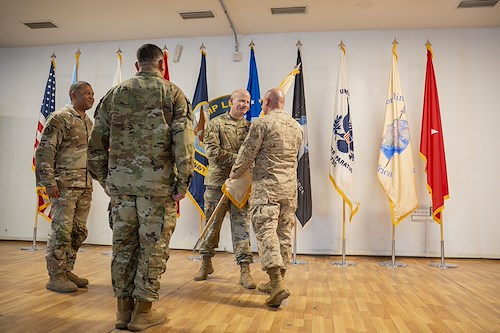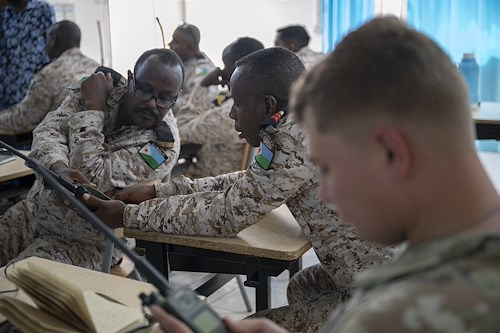Gallery contains 6 images
×
Photo 1 of 6
CJTF-HOA slings loads of sling load knowledge to its members
U.S. Army Spc. April Woolley, help desk technician, Communications Directorate, Combined Joint Task Force – Horn of Africa (CJTF-HOA), simulates connecting palletized materials to a helicopter during a sling load training class at Camp Lemonnier, Djibouti, Feb. 27, 2020. The class was designed to familiarize service members with basic sling load procedures, capabilities and operations. (U.S. Air Force photo by Senior Airman Dylan Murakami)
Photo by: Senior Airman Dylan Murakami
Photo 2 of 6
CJTF-HOA slings loads of sling load knowledge to its members
U.S. Army Spc. Albert Terrazas, driver, Delta Company, Task Force Guardian, Combined Joint Task Force-Horn of Africa (CJTF-HOA), secures an apex fitting with a cotter pin during a sling load training class at Camp Lemonnier, Djibouti, Feb. 27, 2020. The class was designed to familiarize service members with basic sling load procedures, capabilities and operations. (U.S. Air Force photo by Senior Airman Dylan Murakami)
Photo by: Senior Airman Dylan Murakami
Photo 3 of 6
CJTF-HOA slings loads of sling load knowledge to its members
U.S. Air Force Col. Kjäll Gopaul, director of Combined Joint Task Force-Horn of Africa’s Communications Directorate, teaches the basics of sling load operations at Camp Lemonnier, Djibouti, Feb. 27, 2020. The class was designed to familiarize service members with basic sling load procedures, capabilities and operations. (U.S. Air Force photo by Senior Airman Dylan Murakami)
Photo by: Senior Airman Dylan Murakami
Photo 4 of 6
CJTF-HOA slings loads of sling load knowledge to its members
U.S. Army Sgt. 1st Class William Veith, platoon sergeant, Delta Company, Task Force Guardian, Combined Joint Task Force-Horn of Africa (CJTF-HOA), tightens a strap during a sling load training class at Camp Lemonnier, Djibouti, Feb. 27, 2020. The class was designed to familiarize service members with basic sling load procedures, capabilities and operations. (U.S. Air Force photo by Senior Airman Dylan Murakami)
Photo by: Senior Airman Dylan Murakami
Photo 5 of 6
CJTF-HOA slings loads of sling load knowledge to its members
U.S. Army soldiers assigned to Combined Joint Task Force – Horn of Africa (CJTF-HOA) work together to palletize materials during a sling load training class at Camp Lemonnier, Djibouti, Feb. 27, 2020. The class was designed to familiarize service members with basic sling load procedures, capabilities and operations. (U.S. Air Force photo by Senior Airman Dylan Murakami)
Photo by: Senior Airman Dylan Murakami
Photo 6 of 6
CJTF-HOA slings loads of sling load knowledge to its members
U.S. Air Force Col. Kjäll Gopaul, director of Combined Joint Task Force-Horn of Africa’s Communications Directorate, demonstrates sling load procedures during a training class at Camp Lemonnier, Djibouti, Feb. 27, 2020. The class was designed to familiarize service members with basic sling load procedures, capabilities and operations. (U.S. Air Force photo by Senior Airman Dylan Murakami)
Photo by: Senior Airman Dylan Murakami
CAMP LEMONNIER, Djibouti – Eight days into a mission that was only supposed to last five, the Special Forces team begins to set up camp. Having been out three days longer than expected, the team is starting to run low on food and other supplies, but because of the nature of the mission, they have to stay in the field rather than turning back to resupply. A situation report is radioed back to their operating location, starting a chain of events that ends with a helicopter delivering all the supplies the team needs without landing.
Scenarios like this influenced personnel from Combined Joint Task Force-Horn of Africa (CJTF-HOA) to participate in the air assault sling load training course Feb. 27. The course, led by U.S. Air Force Col. Kjäll Gopaul, director of CJTF-HOA’s Communications Directorate, and U.S. Army 1st Lt. Aaron Goodwin, Task Force Guardian Headquarters Company platoon leader, CJTF-HOA, trained service members on properly preparing, building and safely securing an external load for transport by helicopter.
“A sling load is a basic mission that our rotor-wing aircraft are able to perform,” Goodwin said. “There will be some type of cargo that we want to move, and we’re able to connect the supplies to the bottom of a helicopter. The helicopter will then tow that load to wherever it needs to go.”
Although the process sounds simple, there are potential risks if the sling isn’t put together properly, so it is important that every step in the process is performed correctly.
“We do this training because there are a lot of inherent dangers embedded in the operation,” Goodwin said. “There’s a very scripted way to set these up, because an improperly constructed sling load can imbalance the load, imbalance the helicopter, or even cause the load to fall apart mid-air.”
During the training, Gopaul explained the purpose of sling load operations, then read each individual step to the class. After each step was read, the participants worked together to accomplish it. After doing it step-by-step, the class tore down their sling loads and reconstructed them without the instructions, and finished by simulating hooking the sling load to a helicopter.
“It was great training; it’s important to at least be familiar with the process,” said Senior Airman Justin Ognoskie, CJ-6 training coordinator, CJTF-HOA. “Just knowing how to attach and tie everything down so that nothing comes loose could be the difference between a successful mission and a catastrophe.
“If there ends up being a need, I’ll be able to reference the instructions and already have a general idea of what to do. It’s very difficult to accomplish something from the instructions alone; having seen how it’s done and doing it myself will make it a lot easier to do in the future,” Ognoskie said.
Because of the nature of CJTF-HOA’s mission, it's not unusual for service members who are normally stationed at Camp Lemonnier to find themselves at forward operating locations. Training classes such as this prepare forward deployed CJTF-HOA personnel to support the command's missions.
“Having this capability and trained skillset locally enables us to be more effective as we operate throughout the Horn of Africa,” said Goodwin. “We’re just increasing the amount of people that are knowledgeable about a sling load, so that if the need were to arise, we’re more capable to support logistic resupply missions in our area of responsibility.”























